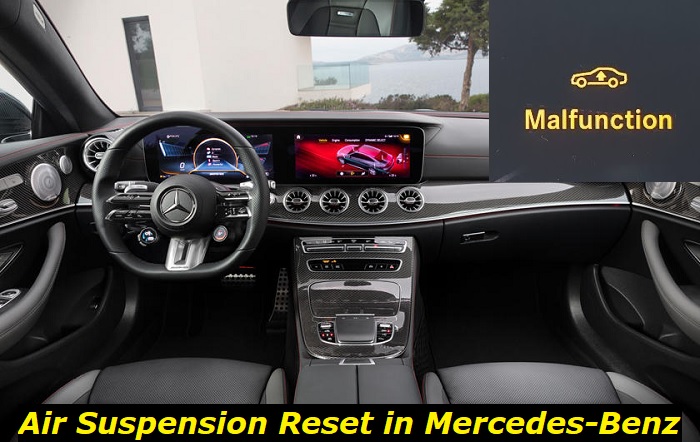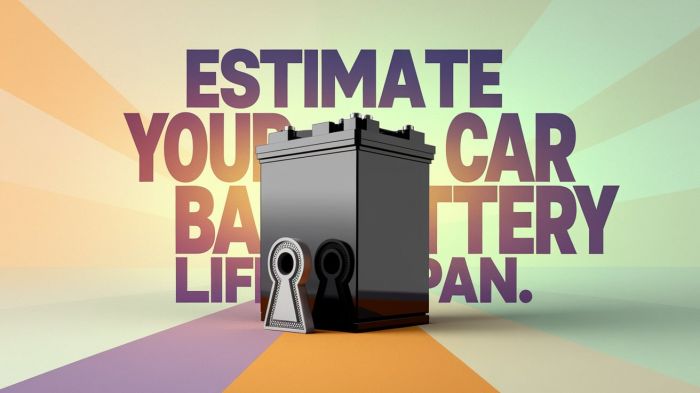Mercedes-Benz may not have invented the air suspension system since the technology has been in use for more than a century in various vehicle applications, but the automaker did introduce several innovations with it when it debuted its signature Airmatic in 2000.
Air suspension problems highlights
- Level of importance:medium
- Common reasons:internal suspension failure, electronic problem
- DIY inspection:impossible
- DIY repair:impossible
- Average price in shops:$550 - $1,900
- Average time:5 - 20 hours
- If ignored:fatal failure, car drops, hard driving

How the Mercedes Airmatic Suspension Works
Mercedes-Benz started fitting several cars across its portfolio with an air suspension system, aptly named "Mercedes-Benz Airmatic", starting with the W220 S-Class for the 2000 model year, which included the S430 and S550 trims. Later on, the innovative technology trickled down to other popular Mercedes models of that era like the GL450, E500 (W211), R350, and CLS550.
The system utilized air springs with electronic level control and adaptive damping in place of the conventional coil springs used in most automobiles. The combination of such factors, which changed depending on driving style and road quality, has definitely resulted in a ride that was incredibly pleasant for the car's occupants.
Thus, the technology is still in use in Mercedes cars today. In fact, the current models of the S-Class, CLS, GLE Coupe, and GLS SUV have it as a standard fit.
In a nutshell, the Mercedes Airmatic provides the following benefits for drivers and passengers:
- Due to the self-leveling nature of the Airmatic suspension system, the comfort of your ride is unaffected by the addition of people or cargo.
- With a mere push of a button, the car may be lifted for more ground clearance on rough terrains.
- The same button may be used to get the car closer to the ground for better handling and aerodynamics at higher speeds.
Airmatic Warning Signs
The air suspension system of Mercedes is not without its flaws though. Sometimes, you may encounter warnings related to its failure. They range from the minor "Airmatic Visit Workshop" message to the more alarming sign in red stating "Airmatic Stop Vehicle Too Low".
The "Airmatic Visit Workshop" notification will still allow you to drive your car, but that does not mean that you should put off the resolution of the problem longer as dilly-dallying can potentially turn this simple problem into a severe one if left unchecked.
The "Airmatic Stop Vehicle Too Low" may mean a more serious problem is looming in your vehicle. Most of the time, the warning comes with your vehicle sagging on one side or its suspension collapsing altogether, but that does not mean that you should panic. When this occurs while you're on the road, calmly park your car in a safe location and call for assistance to bring your auto to the nearest repair shop.
DIY Solutions
The good news is that there are some DIY solutions to the minor issues of the Airmatic system. Sometimes, these can be fixed through a simple Mercedes air suspension reset.
As long as your air suspension is not damaged or sagging in any way, you can apply the following methods to successfully reset your Mercedes air suspension:
1. Restarting the Car
In most instances, the warning sign you are seeing is likely gone the next time you restart your car. This happens if the cause of the issue is a simple glitch in your car's software.
2. Disconnecting the Battery
If the first does not cut it, you may have to disconnect the battery to reset the onboard diagnostic system of your car. Do note that this will unlikely work with cars produced after 2005 as the computers of these vehicles already have a more advanced memory to store data. Nonetheless, it's still worth a try.
- Begin by detaching the cables that are connected to your battery. Start with the negative (-) cable first because doing it with the positive (+) cable initially might cause battery arcing, which could potentially harm your automobile.
- Keep it in that condition for no more than 30 minutes, but no less than 15 minutes. You can also bridge the negative and positive connections using a jumper cable for two minutes to totally drain the extra current and more effectively reset the system.
- Following that, turn on the ignition, but not far enough to start the engine. Just switch it on until the indicators on your dashboard are lit.
- Turn it off once more and start your engine normally, and then let your vehicle idle for 15 minutes.
If everything is done correctly, your car's computer will recalibrate after traveling at least 100 miles and fix the error in your dash.
3. Resetting the Fault Code Using OBDII Scanner
Resetting a fault code on a Mercedes-Benz is relatively easy to do if you have an OBDII scanner. The specific method to do this varies depending on the model and brand of your device, so be sure to consult its manual or follow the prompt it provides along the way for you to successfully complete the process. However, this is only advisable if there are no other foreseeable causes for the error code in your dashboard other than a minor hiccup in your car's computer.
4. ECU Software Flashing
If all else fails, it's already possible that you may be facing a more serious problem with your Mercedes. At this point, we strongly advise you to get your car to a technician or mechanic for repairs already, but if you want to give it one last go because you really think that it's still the software acting up, another option is to flash your engine control unit (ECU).
This is a more advanced solution that should only be done if you have access to a computer installed with ECU software that's compatible with your Mercedes and you have the technical skills to understand its advanced operation.
5. Mercedes Lowering Tool
One more option available for you if you insist on taking care of the problem is via a Mercedes Airmatic calibration tool. This comes in handy if you're positive that there's no damage in your air suspension and all that's causing the issue is an improper setup with it.
There are different types of software you can use for this depending on the model of your car. Just be sure to check the compatibility of your software with the class of your Mercedes. Familiarize yourself with its various functions via the manual that comes with it, too.
From here, you can adjust the suspension of your Mercedes to bring it back to its recommended settings. Alternatively, you can modify the suspension based on your driving preference. Be warned that even a minor mistake or setting the wrong parameters here can cause more damage to your car, so better weigh your options carefully.
Complex Problems Requiring Professional Services
The signs that you need to seek the help of a professional mechanic are when you have already exhausted all your options using the DIY solutions stated above, you find the problem to be a recurring matter, you lack the technical skills to do the aforementioned fixes, or there are obvious signs of damage in your air suspension.
Air suspension problems can cause all sorts of problems for your vehicle, not to mention your safety. Therefore, this is not something that you can delay for long.
If the problem persists, you may likely be looking at one or a combination of the most common issues experienced by the Mercedes air suspension system such as a defective strut, a damaged compressor, a burnt relay, or a valve leak. The best course of action for any of these is to replace the damaged or malfunctioning component.
However, if the damage is only minor such as a small leak caused by a worn sealant, gasket, and solenoid, you may be able to get away with cheaper repairs that merely involve replacing the said parts. There may be cases as well where there's no damage and the malfunction is just caused by debris or dirt clogging the lines or holding some of the system's moving parts. For these, a cleaning job may only be required to remove the contaminants and get your suspension functioning well again.
Finally, it should be noted that there may be other factors at play that may directly or indirectly affect your air suspension and its module. Examples of these are improperly aligned or deflated wheels causing your vehicle to sag, sensor problems giving off wrong signals to the car computer, other electrical issues triggering various error codes in your auto including the suspension warnings, and more.
These should make it confusing or harder to immediately diagnose the cause of the problem. In these events, the services of a professional mechanic are certainly a must.
Conclusion
Air suspension problems can be triggered by either mechanical or electrical issues. In some cases, both may be at fault. While there are definitely DIY solutions to these issues, we highly advise having your vehicle serviced at the first sign of these problems to ensure their smooth operation and keep you out of trouble along the way.
About the authors
The CarAraC research team is composed of seasoned auto mechanics and automotive industry professionals, including individuals with advanced degrees and certifications in their field. Our team members boast prestigious credentials, reflecting their extensive knowledge and skills. These qualifications include: IMI: Institute of the Motor Industry, ASE-Certified Master Automobile Technicians; Coventry University, Graduate of MA in Automotive Journalism; Politecnico di Torino, Italy, MS Automotive Engineering; Ss. Cyril and Methodius University in Skopje, Mechanical University in Skopje; TOC Automotive College; DHA Suffa University, Department of Mechanical Engineering






Add comment